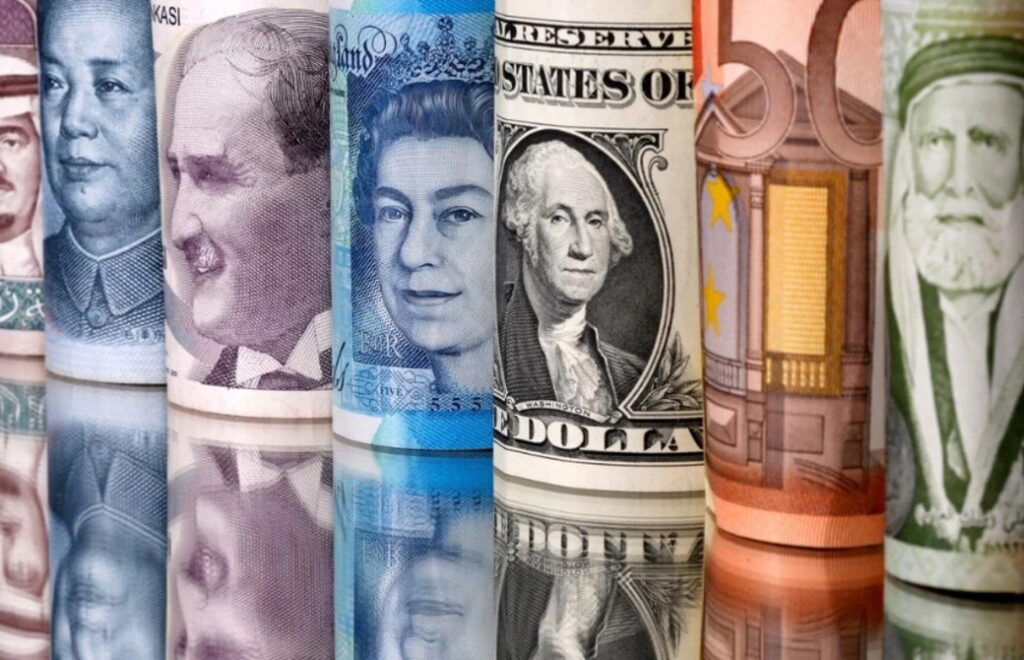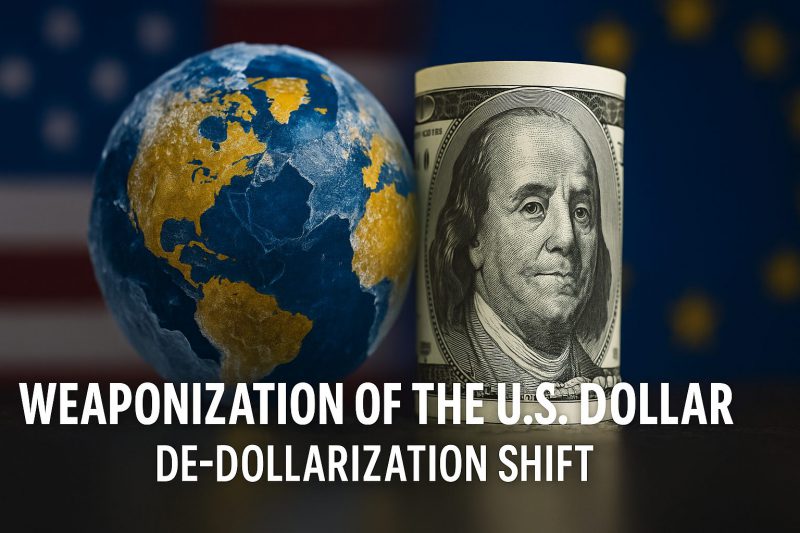The weaponization of the U.S. dollar has become a hot topic in international finance right now, especially after the United States took the dramatic step of freezing about $300 billion of Russian foreign exchange reserves back in 2022. This bold move has set off a chain reaction of currency market volatility and has got many countries seriously questioning U.S. dollar dominance in global trade. At the time of writing, we’re seeing more and more nations actively looking for ways to reduce their dependency on the American currency.
Also Read: Trump Moves to Impose 100% Tariff on All Foreign-Made Films
How De-dollarization is Affecting Global Markets and Investments in 2025


Dollar Weaponization Through Sanctions
Since the Cold War period, the United States has used dollar payments together with their financial network for economic sanctions against nations whose interests differ from American policies. The practice began during the 1950s when the Soviet Union and North Korea came under dollar weaponization followed by sanctioning of Iran, Cuba, Venezuela, Afghanistan, and Pakistan through the years.
The regular application of dollar-based sanctions throughout many years has diminished their effectiveness because target countries develop countermeasures to avoid their impact.
The dollar weaponization cleared new heights after the Ukraine conflict began in February 2022 when NATO allies and America blocked USD 300 billion worth of Russian foreign exchange reserves. The Western governments endorsed this move yet several other nations expressed worry about their dollar assets.
Global De-dollarization Response
In response to the growing currency market volatility and concerns about U.S. dollar dominance, several world leaders have spoken out. For instance, French President Emmanuel Macron expressed concern about Europe’s financial sovereignty.
China and Russia have already conducted bilateral trade worth over USD 240 billion, with about 90 percent of that trade now denominated in Chinese Yuan rather than dollars. This represents a significant shift in how major economies are conducting their business.
Also Read: De-Dollarization: Warren Buffett Says the U.S. Dollar Is Going to Hell
BRICS Currency Initiative & U.S. Dollar Dominance
The BRICS economic bloc, which was originally formed in 2009, has been gaining momentum as a counterweight to Western-dominated financial institutions. Since around 2022, Russia has been actively promoting the idea of a BRICS international currency, and this concept was further discussed at their summit in August 2023, where they proposed something called “R5” as a potential name.
As of now, this expanding coalition includes fourteen member countries that together represent approximately a quarter of the global economy and almost half of the world’s population – making their push against the weaponization of the U.S. dollar particularly significant.
J.P. Morgan analysts have acknowledged this shift in their recent reports, noting that “Diversification away from the dollar is a growing trend. However, the factors supporting the dollar’s dominance remain deeply entrenched and structural in nature. The dollar’s role in global finance, its economic and financial system for USD liquidity, and institutional transparency all indicate that any meaningful erosion of dollar dominance is likely to take decades.”
Emerging Market Responses to Weaponization of the U.S. Dollar
Pakistan together with other countries faces difficulties alongside benefits resulting from their de-dollarization efforts. The foreign transactions of Pakistan consist of USD-denominated trade which represents 86% of their total volumes and euro-denominated trade forms less than 10% of their international business. The excessive use of the dollar currency by Pakistan resulted in severe economic problems when its currency lost almost 150% of its worth since 2018.
In June 2023 Pakistan made a major departure from tradition by purchasing Russian oil through Chinese yen payment instead of the dollar standard.
U.S. President Donald Trump introduced specific remarks about his diplomatic approaches with China in a recent public statement:
“At some point, I’m going to lower tariffs, because otherwise, you could never do business with them, and they want to do business very much.”
Also Read: Ripple XRP: ETF Inflows Will Surpass $8B by 2026
The weaponization of the U.S. dollar through actions like freezing Russia’s reserves has definitely accelerated global de-dollarization efforts. While U.S. dollar dominance isn’t going away overnight and experts predict any major shift will take decades, countries around the world are actively developing alternative payment systems and currency arrangements to reduce their vulnerability to American financial power.





